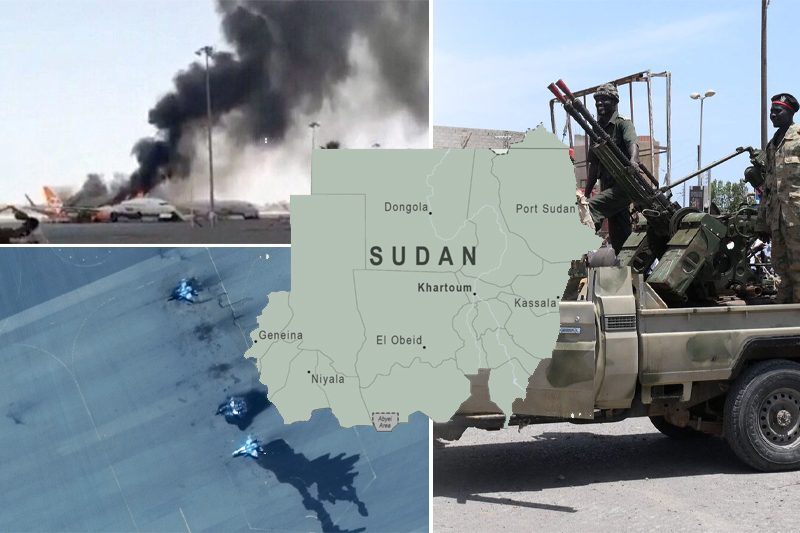
Major Updates: Sudan fighting rages as internationally brokered truce breaks down
At least 270 people have been killed since clashes broke out in Sudan a few days back, the World Health Organisation informed, quoting the country’s health ministry.
At the heart of the deadly conflict is a power struggle between two rival commanders, General Abdel Fattah al-Burhan, leader of the Sudanese Armed Forces (SAF), and Mohamed Hamdan Dagalo, deputy leader and head of paramilitary Rapid Support Forces (RSF).
Despite an internationally brokered ceasefire that was supposed to be in effect for 24 hours, forces loyal to the warring generals continued to fight and accuse each other of violating the truce.
Amid mounting international calls to end hostilities in the African country, here are three major updates.
Thousands flee Khartoum
Residents in thousands have fled the capital as fighting continued for a fifth day after an agreed 24-hour ceasefire collapsed within minutes of its proposed start at 16:00 GMT on Tuesday.
Keep Reading
People stuck in their houses have started becoming increasingly desperate, with power outages, a shortage of running water, and declining food supplies.
As civilians lost hopes of being evacuated when the truce broke down, many decided to take the matter into their own hands, leaving Khartoum reportedly in cars or on foot.
Power cuts and looting
Widespread power outages and a serious lack of running water caused by the fighting have left scores of residents struggling in the last few days of Ramadan, while putting several hospitals out of service. Khartoum residents have been asked to cut down on their electricity usage.
Offices and schools in the capital have been shut since the conflict broke out Saturday amid reports of widespread assault and looting. Long queues are seen forming outside bakeries still functioning in the chaos.
Hospitals go out of service
Sudan’s health ministry has raised concerns over the deteriorating healthcare situation in the country, taking to Twitter to highlight Khartoum’s public health sector was on the verge of “total collapse” as 16 hospitals remained out of service.




